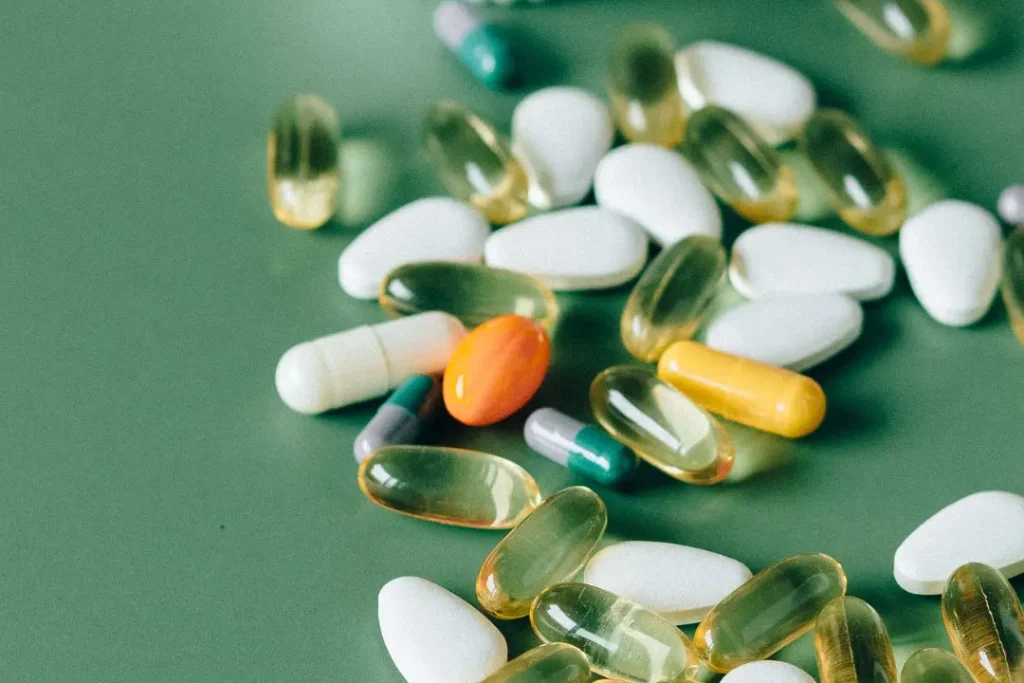The daffodil, also known as Narcissus spp. in botanical terms, is a flower well-known for its cheery yellow blossoms and alluring scent. The daffodil, however, retains a fascinating role in the field of medicinal botanicals beyond its decorative appeal, mostly because of its bulb’s high alkaloid content. This page will examine the characteristics, advantages for health, recommended dose, negative effects, possible drug interactions, and appropriate use of this plant.
You May Also Like:
Cognitive Health Extra Strength Supplement vs Medicine Man Plant Co.’s The Brain Pill
Cup Plant: Benefits, Dosage, Side Effects, Drug Interactions, and Other Important Information
Daffodil: Benefits, Dosage, Side Effects, Drug Interactions, and Other Important Information is an original (NootropicsPlanet) article.
The Nature of Daffodil
The daffodil is a perennial plant that is a member of the Amaryllidaceae family and is indigenous to the meadows and forests of southern Europe and North Africa. Its bulb, which is a rich source of alkaloids, a class of naturally occurring organic chemicals with a preponderance of basic nitrogen atoms, has the most medicinal potential.
Galanthamine and lycorine are two of the several daffodil alkaloids that have drawn substantial scientific attention. Galanthamine is used to treat Alzheimer’s disease and has garnered acclaim for its capacity to improve cognitive function. On the other hand, preclinical research on lycorine have shown it to have antiviral and anticancer properties.
Health Benefits of Daffodil
The galanthamine found in daffodil bulbs is principally responsible for one of the flower’s main advantages, which is cognitive improvement. A competitive, reversible acetylcholinesterase inhibitor, galantamine. A neurotransmitter essential for memory and learning, acetylcholine, is made more readily available in the brain by blocking this enzyme.
Another daffodil alkaloid called lycorine has demonstrated remarkable anti-cancer effects in preclinical research. It seems to cause cancer cells to undergo apoptosis, or programmed cell death, without doing much damage to healthy cells. Lycorine has also shown antiviral action, however further study is needed in this area.

Chemistry of Daffodil
The chemical makeup of the daffodil, Narcissus spp., is distinctive, especially in the bulb. It is abundant in alkaloids, organic substances with basic nitrogen atoms that have a variety of physiological effects. Galanthamine and lycorine are the two most important alkaloids of interest.
Tertiary alkaloid galantamine has been extensively researched for its ability to improve cognitive function. Lycorine, a non-basic alkaloid, on the other hand, has demonstrated potential in preclinical investigations as an antiviral and anticancer drug. However, just because it contains a positivite health trait does not excuse Daffodil’s likely harmful traits.
Physiological Mechanisms of Action of Daffodil
The primary physiological activities of the plant’s main alkaloids are the source of the daffodil’s medicinal effects:
The daffodil compound galanthamine is known for its benefits on cognitive function. Acetylcholinesterase, an enzyme that degrades acetylcholine, a neurotransmitter crucial for memory and learning processes, is its primary target and the mechanism of action for this drug. Galanthamine blocks this enzyme, which raises acetylcholine levels in the brain, potentially improving cognitive function, especially in diseases like Alzheimer’s.
Lycorine has shown promise in preclinical research as an antiviral and anticancer agent. Although the precise methods by which it works are not yet entirely known, it seems to entail the activation of apoptosis, or programmed cell death, in cancer cells. The imbalance between cell growth and death is maintained by this mechanism, whose instability can result in the formation of cancer. Lycorine may assist in reestablishing this equilibrium by triggering apoptosis, so preventing the development of cancer cells.
Additionally, it appears that lycorine’s antiviral action results from its interference with some viruses’ reproduction mechanisms. For the mechanisms at play to be completely understood, further study is required in this area. Until then, exterme caution should be exercised with Daffodil by account of how many known drawbacks it carries.
These methods demonstrate the exciting therapeutic potential of the daffodil alkaloids and emphasize the need for more study.

Optimal Dosage and Usage
Due to its potential for hazardous effects and the wide range of preparations available, it is difficult to determine the dose of daffodil, particularly in the form of a supplement. If choosing over-the-counter supplements, people should generally stick to manufacturer recommendations to the letter.
For example, the dose of galanthamine used therapeutically ranges from 8 to 24 mg daily, however it should only be used under medical supervision. A healthcare practitioner should always be consulted before beginning a new supplement regimen.

Side Effects
Daffodil has the potential to be medicinal, but because of its high alkaloid content, it also presents a considerable danger, especially for pets Daffodil poisoning, especially if the bulb is consumed, can cause symptoms like vomiting, diarrhea, and stomach discomfort as well as more serious ones like tremors, seizures, and even heart rhythms.

Potential Substance Interactions
Concerns arise from interactions with other drugs. Galanthamine may worsen the negative effects of some anticholinergic drugs and interact with several medicines, particularly those used to treat Alzheimer’s disease. The plant’s suspected anticoagulant characteristics warn against using it in conjunction with drugs that thin the blood.
Best Responsible Use
A ubiquitous and well-liked flower, the daffodil also has a lesser-known side as a source of strong alkaloids. The substantial galanthamine content of the bulb may have cognitive-improving effects, while lycorine has anti-cancer and antiviral potential. The possible toxicity of the plant and its interactions with other drugs, however, underscore the need for caution. To completely comprehend the daffodil’s medicinal potential and identify the safest and most efficient ways to take use of its advantages, more scientific investigation is required.
Daffodil:
Conclusion
Daffodil presents a fascinating blend of beauty and medicinal potential, but it doesn’t take long to realize the drawbacks quickly outweigh the benefits. While its alkaloid-rich bulb contains compounds like galanthamine and lycorine that show promise in improving cognitive function, fighting cancer, and combating viruses, the systemic toxicity of the plant may relegate it as a non-option compared to other less-harmful alternatives.
At the end of the day, it may be a plant best suited to adorn your kitchen table instead of as a solution in your pharmeceutical cabinet.
References:
- Drugs from Daffodils Retrieved From: https://www.soci.org/Chemistry-and-Industry/CnI-Data/2011/4/Drugs-from-DAFFODILS#:~:text=Daffodils%20have%20been%20used%20regularly,for%20centuries%20in%20cancer%20treatments.
- Are Daffodils Poisonous? – Yes, Here’s the Lowdown. Retrieved from: https://stoneageman.com/are-daffodils-poisonous-yes-here-is-the-lowdown/
- Daffodils. Retrieved from: https://www.petpoisonhelpline.com/poison/daffodil/
Important Note: The information contained in this article is for general informational purposes only, and should not be construed as health or medical advice, nor is it intended to diagnose, prevent, treat, or cure any disease or health condition. Before embarking on any diet, fitness regimen, or program of nutritional supplementation, it is advisable to consult your healthcare professional in order to determine its safety and probable efficacy in terms of your individual state of health.
Regarding Nutritional Supplements Or Other Non-Prescription Health Products: If any nutritional supplements or other non-prescription health products are mentioned in the foregoing article, any claims or statements made about them have not been evaluated by the U.S. Food and Drug Administration, and such nutritional supplements or other health products are not intended to diagnose, treat, cure, or prevent any disease.


